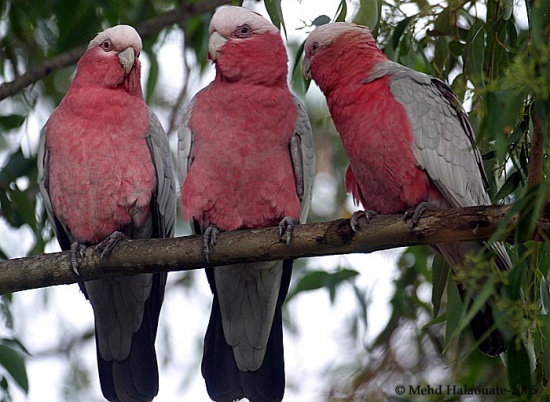| Line 1: | Line 1: | ||
| − | |||
;Eolophus roseicapilla | ;Eolophus roseicapilla | ||
[[Image:Galah.jpg|thumb|550px|right|Photo by mehdhalaouate <br>Photographed: Canberra, Australia]] | [[Image:Galah.jpg|thumb|550px|right|Photo by mehdhalaouate <br>Photographed: Canberra, Australia]] | ||
Revision as of 01:21, 6 February 2008
- Eolophus roseicapilla
Australian endemic. Put into genus Eolophus (monospecific).
Identification
The Galah (35cm) is an unmistakable cockatoo with a rose pink head, breast and underparts, and a grey back, wings and tail. The short crest is white. The sexes are similar, however can be distinguished on eye colour, or eye colour and eye ring (depending on the subspecies). Females have a red iris/red iris and red eye ring, while males have a grey eye ring and dark brown iris.
Distribution
The species is widespread over Australia, to which it is endemic. It is absent only from the most arid zones of the continent, and the far north of Cape York. Their distribution appears to have greatly expanded since European settlement, as it has benefited from the planting of crops and the provision of stock watering points in dry areas.
Taxonomy
Galahs are members of the cockatoo family Cacatuidae within the order Psittaciformes. There has been some controversy over their taxonomy, however they are generally placed in the monotypic genus Eolophus, and thought to be, with the Major Mitchell Cockatoo, an early divergence from the white cockatoo lineage.
Habitat
Open woodland, riverine woodland, agricultural districts and human settlements.




